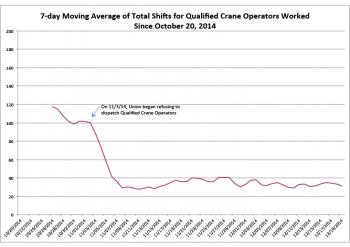
US wine shipments threatened as ports gridlock ahead of possible shutdown
US ports are currently facing gridlock traffic as the International Longshore and Warehouse Union and the Pacific Maritime Association which represents shipping lines has failed to reach an agreement in contract negations with an impending shut down only days away.
Some wine producers have been planning accordingly and increased shipments months ago in anticipation of the problems. According to the global wine and grape broker Ciatti's most recent monthly report, Chile, which had its own port strike at the begin of 2014 increased shipments of wine in April 2014 ahead of problems in the US.
"The port strikes during the first couple of months in 2014 slowed exports and decreased sales significantly. This situation dramatically changed in April due to the forecasted west port strike in the US, which increased shipments for a period of time," the report said.
The two parties have had contract discussions over the past nine months but have not been able to reach an agreement.
 Crane operators productivitySource: Pacific Maritime AssociationA drop in productivity happened in October coinciding with the number of available crane operators
Crane operators productivitySource: Pacific Maritime AssociationA drop in productivity happened in October coinciding with the number of available crane operators
In response the ILWU implemented 'go-slow' tactics beginning in late October. At some ports such as the Long Beach and Los Angeles port, the ILWU has cut the number of dispatched daily skilled yard operators by two thirds. The Los Angeles and Long Beach ports are responsible for 40% of all US container traffic.

|
A drop in productivity happened in October coinciding with the number of available crane operatorsPacific Maritime Association |
Federal mediators joined the negotiations in December after seven months of talks. The ILWU workers have been working without a contract since the middle of last year.
Congestion has reached a point that the PMA could impose a lockout on workers in the next five to 10 days. It is estimated by the National Retail Federation that such shut down could cost the US billions of dollars daily.
It was estimated that a 5 day lockout would reduce the gross domestic product by US$1.9 billion per day, a 10-day lockout would cost US$2.1 billion per day and a 20 day lock out could run as high as US$2.5 billion per day, according to the Financial Times.
The last lockout occurred in 2002 and lasted 10 days, however the ramifications of the port closures had implications for months afterwards.
There is so much congestion in West Coast ports, those shipping goods have resorted to air freight, which is significantly more expensive.







